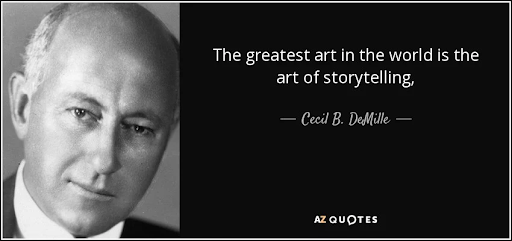Table of Contents
Introduction
Storytelling is an ancient art form, a powerful tool that has been used to captivate audiences and convey messages for centuries. In today’s competitive marketplace, storytelling has become an essential ingredient for brands seeking to connect with their customers on a deeper level.
A thoughtfully crafted narrative can make a brand more relatable, offering consumers a connection that extends beyond just products and services, thereby building authentic trust and brand loyalty. Every detail in a brand’s story, regardless of its size, adds depth to the overall narrative.
Maintaining consistent storytelling throughout all aspects of your branding guarantees that your brand’s narrative forges a true connection with audiences, fostering trust and leading to enduring customer relationships.
Why Storytelling Matters for Brands
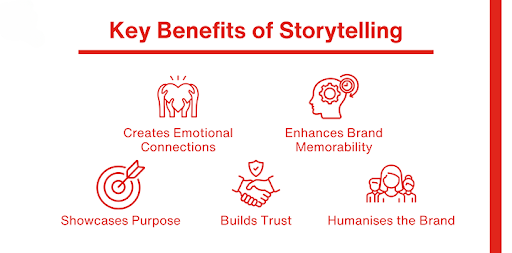
Every brand aims to capture the interest of potential customers, and storytelling provides an effective method to engage a target audience with a brand. Brand storytelling involves utilizing narratives to connect with your customers and define your brand’s identity.
- Creates emotional connection: Storytelling enables brands to resonate with audiences on a personal level, fostering deep emotional bonds.
- Enhances brand memorability: Engaging narratives make a brand more memorable, ensuring it stands out in consumers’ minds.
- Showcases purpose: Through stories, brands effectively communicate their mission and values, highlighting their underlying purpose.
- Builds trust: Authentic storytelling demonstrates transparency and integrity, establishing trust with the audience.
- Humanizes the brand: Stories give a brand a relatable persona, making it appear more human and approachable.
Key Elements of Effective Brand Storytelling

Brand storytelling is more than crafting a catchy tagline; it’s about creating meaningful connections through well-structured narratives. To engage and resonate with your audience, your brand’s story should be authentic, emotionally compelling, and relatable.
- Character Development: Every great story needs relatable characters. Your brand, customers, or even your employees can serve as the protagonist, showcasing real-life experiences that connect emotionally with your audience.
- Conflict and Resolution: Highlight the problem your brand solves and illustrate how it brings transformation. A clear conflict followed by a satisfying resolution keeps your audience invested in the story.
- Emotion Over Information: Facts inform, but emotions sell. Stories that evoke empathy, excitement, or inspiration are far more memorable than a list of features or statistics.
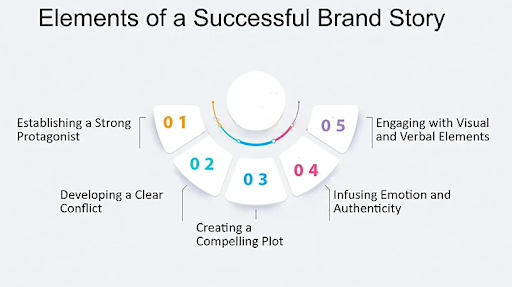
Effective brand storytelling also hinges on consistency and authenticity. Staying true to your identity while adapting the story to your audience ensures that your narrative remains impactful and relevant.
- Establishing a strong protagonist: Helps brands create relatable and memorable identities that resonate with their audience.
- Developing a clear conflict: Enables brands to highlight their unique solutions and differentiate themselves in the market.
- Creating a compelling plot: Engages customers by taking them on a journey, fostering deeper connection and loyalty.
- Infusing emotion and authenticity: Builds trust and emotional bonds, making the brand more human and trustworthy.
- Engaging with visual and verbal elements: Enhances storytelling impact, ensuring the brand message is memorable and effectively communicated.
By incorporating these key elements, your brand storytelling will not only captivate your audience but also foster deeper relationships and loyalty.
How to start using storytelling in your marketing?
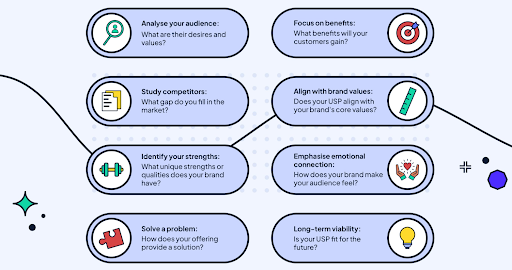
Start by defining your brand narrative, focusing on your business’s purpose, values, and the problems your products or services solve. Create a storyboard to connect your key messages, unique selling proposition, and taglines.
- Determine your audience: Research your ideal customers and segment them. This will help you communicate effectively, as each group has unique needs, wants, and pain points that require tailored messaging.
- Understanding of your channels: Storytelling in marketing requires to understand your marketing channels as they evolve to tailor your content accordingly.
- Craft the end of the story: Engaging customers emotionally is vital, but guiding them to the desired action is equally important. Always provide a clear call to action; without it, your customers may feel disoriented and dissatisfied.
- Use visuals to add to the experience: Visuals play a crucial role in enhancing the narrative and experience you provide to your customers. Whether it’s video, images, infographics, or GIFs, consider how you can integrate your messaging with these visuals to create a comprehensive story about your business.
Reflect on what makes you unique, the problems you address, and why customers choose you over competitors. Think about the emotions you want your audience to feel when they engage with your content.
Techniques for creating compelling storylines

Crafting a compelling storyline requires a mix of creativity, strategy, and a deep understanding of your audience. To achieve this, your narrative should be structured with a clear beginning, middle, and end, while maintaining authenticity and alignment with your brand’s values.
- Start with a Hook: Begin your story with an intriguing question, unexpected fact, or relatable scenario that grabs your audience’s attention instantly.
- Use the Hero’s Journey Framework: Structure your story around a protagonist (your customer) overcoming a challenge with your brand as the guide or solution.
- Incorporate Conflict and Resolution: Every engaging story has a problem and a resolution. Show how your brand solves a pain point or transforms lives.
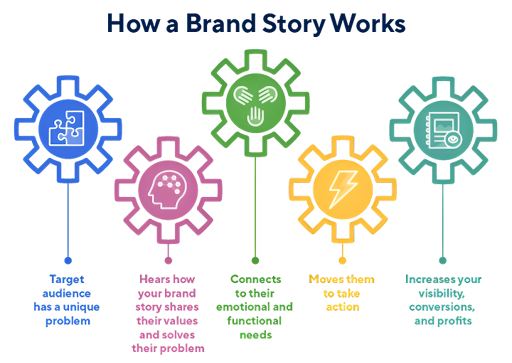
To make your storyline even more engaging, focus on building an emotional connection with your audience. People remember how a story makes them feel, so infusing your narrative with relatable emotions like hope, determination, or joy can be a game-changer.
- Leverage Relatable Themes: Tap into universal experiences or values, such as family, ambition, or resilience, to make your story more relatable and impactful.
- Create Multi-Sensory Experiences: Use vivid imagery, descriptive language, or even sound and visuals to immerse your audience in the story.
- Keep It Authentic: Genuine, real-life stories resonate more deeply than overly polished or exaggerated ones. Be honest about your brand’s journey or your customers’ experiences.
By applying these techniques, you can craft storylines that not only captivate but also inspire your audience to take action and build a stronger connection with your brand
Real-World Examples of Great Brand Storytelling
Nike: “Just Do It”

Nike’s storytelling revolves around empowerment, perseverance, and celebrating human potential. Their campaigns, such as the iconic Colin Kaepernick ad, highlight overcoming challenges and achieving greatness, making their brand synonymous with inspiration and motivation.
Apple: "Think Different"

Apple’s storytelling is rooted in innovation, creativity, and challenging the status quo. Their campaigns, like the “1984” Super Bowl ad, positioned the brand as a revolutionary force, inspiring consumers to embrace individuality and innovation.
Coca-Cola: "Share a Coke"

Coca-Cola’s “Share a Coke” campaign personalized storytelling by putting individual names on bottles, encouraging people to share moments of happiness and connection. This approach transformed a product into a symbol of relationships and celebration.
HisCorner

HisCorner emerged from a passion for bringing a personal touch to every celebration. This impactful business recognizes the importance of fostering meaningful connections and the unique joy that personalized gifts bring to both giver and recipient.
With a dedication to making every moment special, HisCorner strives to create memorable experiences through thoughtful, customized offerings.
JIV Athletics

JIV Athletics is a patented, eco-conscious brand specializing in premium athletic undergarments designed exclusively for women. Their performance underwear stands out for its superior quality and innovative features, including breathability, moisture-wicking properties, tagless comfort, roll-free fit, and cameltoe-proof design.
Aztec Container

Established in 1969, Aztec Container began by offering standard 20- and 40-foot containers in Southern California. Responding to customer needs, they introduced customizations like painting, vents, and walk-in doors. Today, Aztec Container specializes in tailored solutions for events, offices, refrigerated units, insulated containers, and living spaces, providing versatile options for diverse applications.
Amazon: "Customer Obsession"

Amazon weaves stories of customer-centric innovation, such as its rapid delivery systems and personalized shopping experiences. Their storytelling underscores their mission to make life more convenient for consumers worldwide.
These brands excel at using storytelling to build emotional connections, foster loyalty, and communicate their values, making them universally admired and recognized.
Lululemon

Lululemon builds its lifestyle brand around mindfulness, fitness, and wellness through storytelling. Campaigns like “This Is Yoga“ redefine yoga as a mindful way of life, while ambassadors share authentic experiences that foster community. This strategy strengthens brand loyalty and positions Lululemon as a premium, aspirational choice in activewear, boosting sales and retention.
Mercedes-Benz: Innovation and Luxury

Mercedes-Benz has executed remarkable digital marketing campaigns focusing on innovation and storytelling. Their “MBPhotoPass” campaign engaged photographers to share creative visuals, while the GrowUp campaign targeted younger audiences, showcasing a modern lifestyle paired with luxury.
The “Invisible Car” campaign demonstrated their hydrogen fuel technology, creating buzz through innovation. Additionally, their partnership with influencers and content creators helped amplify brand reach and authenticity.
Challenges in Storytelling and How to Overcome Them
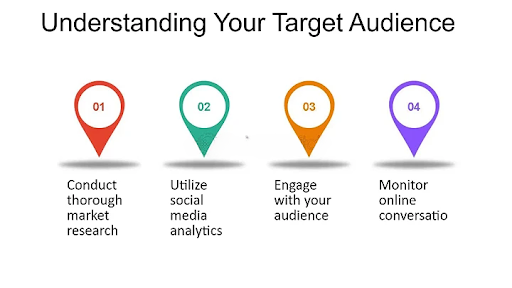
- The initial challenge in storytelling is to identify who your audience is. It’s essential to grasp your target market’s needs, preferences, pain points, and goals
- Failing to do so could lead to narratives that are irrelevant, dull, or even offensive
- To prevent this, conduct thorough research, develop buyer personas, and customize your narratives to align with their interests and expectations
Develop a clear message
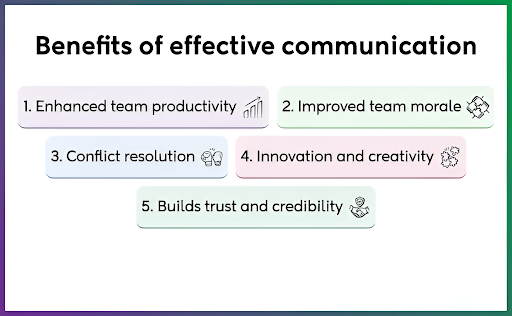
- The second challenge lies in creating a clear and engaging message that aligns with your brand’s identity, values, and aspirations
- You should establish a purpose for your story, a central idea you wish to communicate, and a call to action you want your audience to follow
- Otherwise, you risk generating stories that are confusing, ambiguous, or inconsistent with your brand
- To avoid this, maintain a content strategy, and a content calendar, and perform content audits to ensure coherence and relevance in your stories
Find a balance between emotion and logic
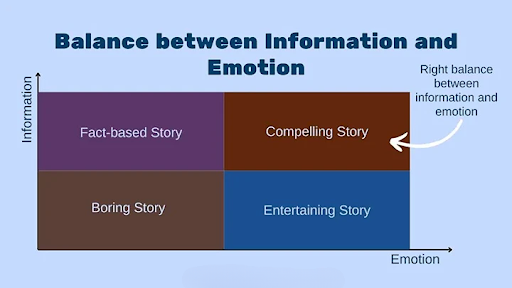
- The third challenge of storytelling is achieving a balance between emotional appeal and logical reasoning in your content
- It’s important to connect with both the feelings and intellect of your audience by utilizing narratives that stir emotions along with facts that validate your assertions
- Otherwise, you risk producing tales that are either overly emotional or excessively rational, which could alienate or bore your audience
- To mitigate this, incorporate a variety of narrative techniques like anecdotes, metaphors, quotes, statistics, and testimonials to develop compelling and balanced content.
Be genuine and unique
- The fourth challenge involves maintaining authenticity and originality in your content
- It’s imperative to share stories that are truthful, sincere, and distinctive to your brand, utilizing your unique voice and style
- Otherwise, you risk creating narratives that seem insincere, deceptive, or derivative, which can tarnish your credibility and reputation
- To avoid this, draw upon your own experiences, insights, and opinions, and ensure to credit your sources appropriately
Assess your impact

- The fifth challenge of storytelling is evaluating the effect of your content on your audience and your business objectives
- You must monitor and analyze the performance of your stories, using metrics like views, shares, comments, leads, conversions, and revenue
- Otherwise, you could end up producing stories that are ineffective, inefficient, or unprofitable, wasting your time and resources
- To prevent this, utilize tools such as Google Analytics, social media analytics, and CRM software to track and optimize your content marketing ROI
Adjust to changes
- The sixth challenge of storytelling is the necessity to adapt to shifts in your audience, market, and industry
- It’s crucial to keep your stories engaging, relevant, and current by leveraging the latest trends, technologies, and best practices
- Otherwise, you risk crafting narratives that are dated, irrelevant, or obsolete, likely losing your audience’s interest and trust
- To avoid this, stay informed, conduct regular surveys, experiment with different formats and channels, and try out new concepts and methods
Future of Storytelling in Branding
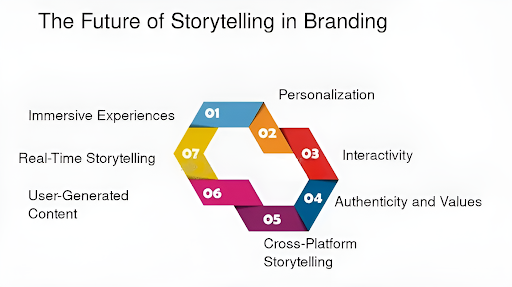
The art of storytelling is evolving rapidly, driven by technological advancements, changing consumer expectations, and the increasing importance of authenticity in brand communication.
- Immersive Technologies Will Redefine Storytelling: Augmented reality (AR), virtual reality (VR), and mixed reality (MR) are transforming storytelling into immersive experiences. Brands like IKEA and Nike use AR for product visualization, while 360-degree storytelling gives consumers control over their engagement.
- Personalization Will Drive Engagement: Consumers seek tailored stories. AI empowers brands to create personalized narratives based on real-time data, while dynamic content adapts to user preferences.
- Multi-Sensory Storytelling Will Gain Traction: Storytelling will incorporate multiple senses for memorable experiences. Sound branding, tactile packaging, and sensory elements in food and lifestyle brands enrich narratives.
- Data-Driven Insights Will Shape Stories: Advanced analytics and AI provide insights into audience preferences, enabling predictive storytelling and real-time feedback. Brands will adapt narratives based on user engagement metrics.
Conclusion
The art of storytelling in branding is timeless, yet constantly evolving. In an increasingly competitive and digital world, stories are the key to connecting emotionally with audiences, building trust, and differentiating brands.
As technology advances and consumer expectations grow, the future of storytelling lies in personalization, immersion, and purpose-driven narratives. Brands that embrace these changes while staying authentic and relatable will not only capture attention but also foster loyalty and advocacy. Ultimately, effective storytelling transforms a brand into an experience, ensuring its relevance and impact for years to come.
Deepak Wadhwani has over 20 years experience in software/wireless technologies. He has worked with Fortune 500 companies including Intuit, ESRI, Qualcomm, Sprint, Verizon, Vodafone, Nortel, Microsoft and Oracle in over 60 countries. Deepak has worked on Internet marketing projects in San Diego, Los Angeles, Orange Country, Denver, Nashville, Kansas City, New York, San Francisco and Huntsville. Deepak has been a founder of technology Startups for one of the first Cityguides, yellow pages online and web based enterprise solutions. He is an internet marketing and technology expert & co-founder for a San Diego Internet marketing company.

